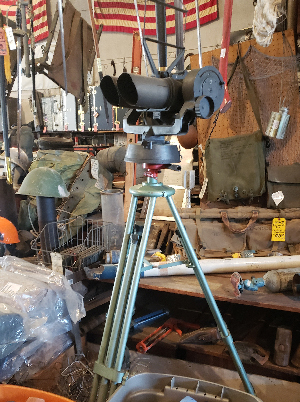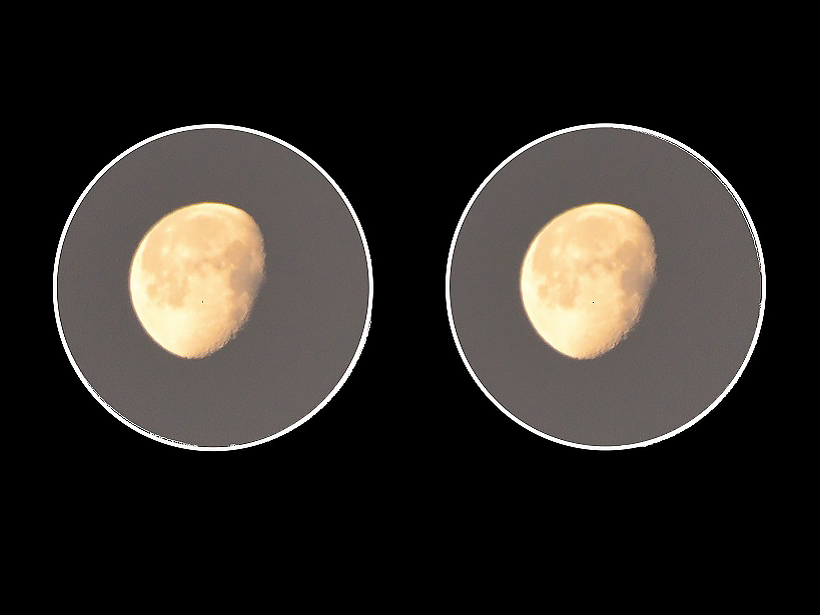Stargazing with two eyes lets you learn your way around the sky intuitively.
One mantra in amateur astronomy is that the very best telescope is the one you find yourself using the most. I’ve owned and built telescopes large and small, and yet I still find myself using binoculars for a quick look at the sky about 90% of the time.
With binoculars, there’s no lugging of heavy tubes and tripods and no setup. I even decided about 20 years ago to invest in a set of image-stabilized binoculars when they came on the market, an amazing piece of tech worth the price of a good telescope.

Chances are, you already have a pair of binoculars ready to use for astronomy, tonight. I used my dad’s hunting binoculars for stargazing for years before I finally picked up a serious telescope. Plus, stargazing with two eyes lets you learn your way around the sky intuitively. When you do get a telescope, you’ll already know where to find the Orion Nebula and Andromeda galaxy like they were old friends.
In fact, I’d go so far as to say you should take an interest in astronomy in stages: First, learn the naked-eye sky, the patterns of the constellations, and how to find the planets; then explore the brighter deep-sky objects with binoculars, and only then get a telescope.
Learning “Binocular Speak”
First, you’ll need to know something about how binoculars work. All binoculars have two easy adjustments you need to make for observing: The first is changing the diopter spacing, or the distance between the two eyepieces. This adjustment stems from the fact that the distance between the eyes is slightly different from one person to the next.
The next adjustment compensates for the vision difference between our eyes. For this, binoculars have one fixed eyepiece and one that adjusts. Focus the fixed eyepiece, then adjust the other so it’s also in focus. After that, you’re ready to observe.
Because of these necessary adjustments, one key drawback with binoculars is that they’re tough to hand off from one observer to the next, as they have to be readjusted every time.
Picking Binoculars for Astronomy

Size matters, so know your aperture. What does “10×50” mean? Every set of binoculars is defined by two numbers: The first is the magnification (in this case, 10 times), and the second is the aperture diameter (in this case, 50 millimeters).
The bigger the aperture is, the more light-gathering ability the binoculars have, making for brighter, crisper views. A bigger aperture also means a better resolution. If you’re looking at 7×50s, you’re looking at good, versatile binoculars. Of course, bigger is better, though you start to get into tripod-mounted territory when you hit over 70 millimeters in aperture. I wouldn’t go smaller than 7×35s for astronomy. Galileo’s first telescope had a measly aperture of 26 millimeters and magnified just 8 times.
In 2020, a good pair of binoculars can be had for US$50, though a high-end pair can cost the price of a good used car. Quality binoculars are common in pursuits such as hunting, birding, and hiking and are easy to track down in sporting goods stores. I’ve also seen some amazing, oversized, tripod-mounted binoculars in military surplus stores.
The points above can be summarized as follows:
- Pros: Binoculars are lightweight, easy to deploy, and intuitive to use.
- Cons: Binoculars are tough to share and not designed for astrophotography.
What Can You See with Binoculars?
The Moon is everyone’s first target of choice with binoculars. It’s fun to watch the Moon go through its phases from one night to the next, as the shadow angle and illumination change over craters, flat maria, and mountains.
A safe solar filter designed to fit snugly over the front aperture of binoculars will allow you to view sunspots on the dazzling photosphere surface of the Sun.
Mercury is a dazzling dot and shows Moon-like phases when viewed with binoculars. Many naked-eye observers haven’t seen Mercury, which always hugs the horizon near dawn or dusk. Sweeping the horizon with binoculars can make this feat of visual athletics possible.
Like the Moon and Mercury, Venus also easily shows phases when viewed through binoculars.
Mars shows off a pumpkin-colored disk near opposition. Often, when a planetwide dust storm is under way, this color will change to a sickly yellow.
Jupiter displays its Galilean moons changing position from night to night.
Saturn’s rings are barely apparent with large binoculars, but its large moon Titan leaps into view in midsized binoculars.
The ice giant worlds of Uranus and Neptune are within range of binoculars.
The clusters, nebulae, and galaxies of Charles Messier’s deep-sky catalog are all in range of binoculars, as are wider double-star systems such as Albireo in Cygnus and Alcor and Mizar in Ursa Major.
Satellites are fun to track with binoculars as they zip through the field of view. You can actually see the structure of the International Space Station when it passes straight overhead, looking like a tiny Star Wars TIE fighter.
Several bright asteroids such as Ceres and Vesta are also in range of binoculars, as are bright comets. We generally get a few good binocular comets a year, which appear as small, fuzzy patches. And you never know when the next great “comet of the century” might turn up in the inner solar system!
Welcome to the world of binocular astronomy, a fun and easy entry into night sky watching.
—Dave Dickinson ([email protected]; @Astroguyz), Science Writer
Citation:
Dickinson, D. (2020), Binocular astronomy, Eos, 101, https://doi.org/10.1029/2020EO138400. Published on 09 January 2020.
Text © 2020. The authors. CC BY-NC-ND 3.0
Except where otherwise noted, images are subject to copyright. Any reuse without express permission from the copyright owner is prohibited.

